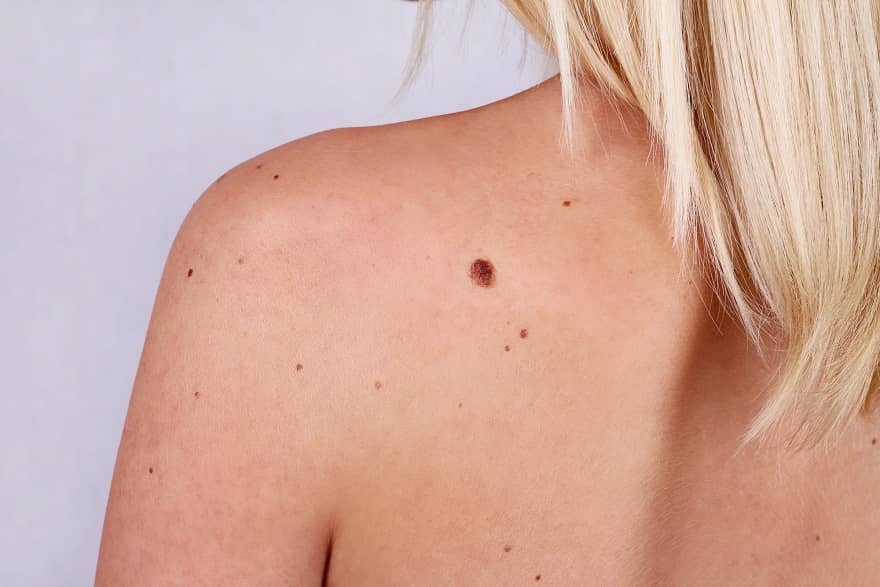Most people have no idea at all how enormous the demand is for the skin care industry. At the global level, people spend more than $148 billion on skin care every single year. In the United States, more than 670,000 people work in some part of the beauty services sector.
One part of the skin care industry is dedicated to managing the different types of moles that people develop. In most cases, our moles are harmless. However, it is worth noting that they are sometimes an indicator of serious health conditions.
In the vast majority of cases, your most will only be a problem if you prefer not to have them for reasons of appearance.
However, there are a number of different types of moles. Understanding more about the various kinds of moles can help you know if you should speak with your doctor about one of your moles. It can also help you understand whether or not removing a mole is a viable option.
Read on to learn all about the most important things to understand about the different kinds of moles!
What Are Moles?
Although there are a few different types of moles, they all share certain things in common. In general, moles are made out of a collection of excess skin cells.
In particular, moles are made out of the kinds of skin cells that provide color and pigment for the skin. That is why they tend to be dark. Sometimes, moles start out as a lighter color and become darker over the years or decades.
Most people develop almost all of their moles by the time they turn 25. However, this is only a general rule.
Some people continue to grow new moles as they get older. Other people find that some of their old moles fade away all on their own.
The Four Kinds of Moles
There are four main kinds of moles. They are called congenital moles, dysplastic nevi, acquired nevi, and spitz nevi. You can learn to recognize each of these different kinds of moles based on their unique identifying characteristics.
1. Congenital Moles
Congenital moles are the ones that you develop in the womb. That means that you usually have them throughout the course of your entire lifetime.
However, most people don’t have any congenital moles. Instead, they grow moles as they proceed through childhood, adolescence, and early adulthood.
However, if you are one of the 1% of people who are born with congenital moles, you should know that they are usually not a problem of any kind. The only thing you should be aware of is that large congenital moles can increase the chance that you develop skin cancer later in life. If you have an especially large congenital mole, you should ask your doctor about it to rule out the possibility of any current problem.
The same applies if some of your smaller congenital moles grow larger and larger over time.
2. Dysplastic Nevi
Unlike congenital moles, dysplastic nevi are a type of mole that you should always discuss with your doctor. These kinds of moles are either unusually large or have uneven surfaces or edges.
In some cases, they also have unusual coloration. For example, they might have lighter and darker colors mixed in together. Although it is technically possible for any kind of mole to turn into melanoma, dysplastic nevi are one of the most common kinds of moles that lead to it.
3. Acquired Nevi
Most of the moles on your body are probably acquired nevi. These are the normal moles that people tend to grow after they are born but before they turn 25.
However, it can be helpful to pay attention to the number of acquired nevi you have. The majority of adults will have somewhere between 10 and 40 moles. If you have grown more than 50 moles, then there is a higher chance that you will develop melanoma later in life.
If you continue to grow new moles after that, you should continue to bring them to the attention of your doctor.
4. Spitz Nevi
Spitz nevi are a rare kind of mole that resemble melanoma. In most cases, they are either pink or a combination of colors. This kind of mole is also more likely to bleed.
That is a definite sign that you should speak with your doctor about a mole. In most cases, even these moles will not turn out to be skin cancer. However, keeping a close eye on them can help you catch skin cancer as soon as possible if you do develop it later on.
How to Remove Moles
Even if all of your moles are perfectly safe, you might want to remove them. Many people are especially interested in removing moles because they have a number of face moles.
In most cases, a dermatologist can perform a simple procedure to help remove moles on faces or other parts of the body. Your dermatologist might remove your moles by freezing them with a small amount of liquid nitrogen. In other cases, they will use a surgical blade to shave them off or rely on a mild burn from an electric current to burn them off.
You can also use laser mole removal, which has a lower risk of scarring than many other mole removal techniques.
Understand the Different Types of Moles
The more you know about the different types of moles you can have, the more certain you can feel about whether or not any of your moles might be evidence of a serious health problem. Many people also want to remove moles even when they are not part of any health condition. It is easier to remove moles now than ever before due to modern medicine.
To learn more about the latest developments in beauty, health, and more, take a look at our other articles!

